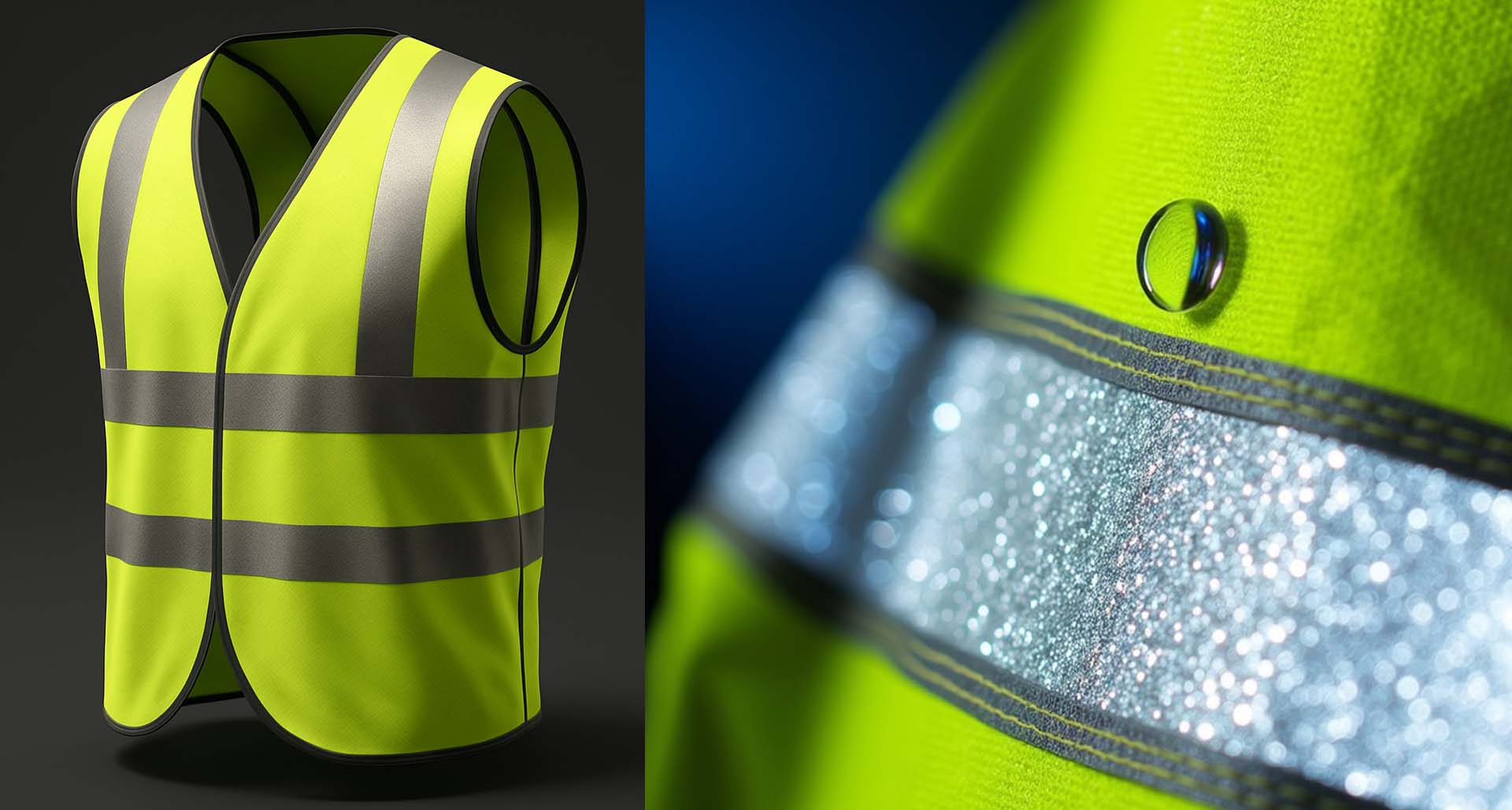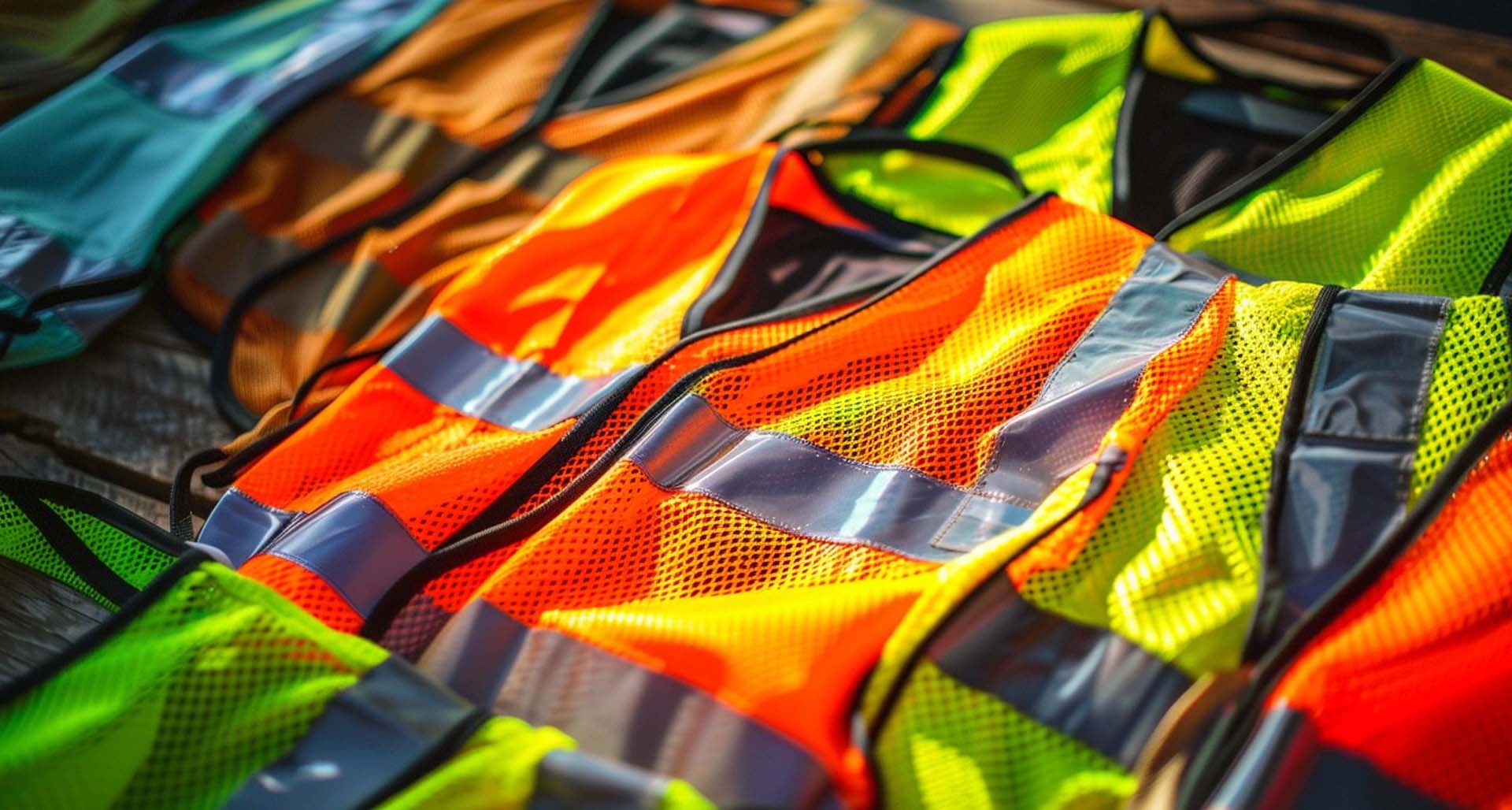What is EN ISO 20471? Detailed Explanation of EN ISO 20471 - Class
For companies and corporations well-versed in the general EU standards for high-visibility protective clothing, it is common to require garments that comply with EN ISO 20471 for export products. So, what does EN ISO 20471 represent? What is the significance of each Class in this standard? Let's explore this in detail with GAK in this article!
What is EN ISO 20471?
Definition: EN ISO 20471 is an international standard that specifies the requirements for high-visibility clothing (reflective vests). This standard ensures that protective clothing is designed to make the wearer easily recognizable under 360° visibility conditions, both in daylight and at night, through the use of reflective tapes or fluorescent fabrics.
A key point of this standard is that the clothing must be designed for 360-degree visibility, meaning the wearer must be clearly seen from all directions without any blind spots. This is a critical factor in ensuring safety by avoiding accidents on construction sites, warehouses, traffic areas, or industrial zones.

Reference for standard reflective tapes:
- Gray Poly Reflective Tape 5cm x 100m
- Good Gray Poly Reflective Tape 5cm x 100m
- Fire-resistant Reflective Tape 03 5cm x 100m
- Fire-resistant Reflective Tape 02 5cm x 100m
What do the Class levels in EN ISO 20471 mean?

EN ISO 20471 classifies high-visibility clothing into three levels, based on the area of reflective and fluorescent materials used in the garments, as follows:
EN ISO 20471 - Class 1
Definition: EN ISO 20471 - Class 1 represents the lowest level of the EN ISO 20471 standard. This class pertains to Hi-vis garments that provide a basic level of visibility in low-risk work environments, suitable for situations with minimal accident risk. This class is appropriate for environments with a maximum speed of 30 km/h.
Specifications of Class 1:
| Feature | Specifications |
|---|---|
| Fluorescent Area | ≥ 0.14 m² |
| Reflective Area | > 0.10 m² |
| Design | 360° reflective tape coverage |
Explanation: The reflective area of > 0.10 m² refers to the actual surface area of the reflective material. For example, a 5 cm wide, 100 cm long reflective tape has an area of 0.05 m², so two such strips would meet the reflective area requirement for EN ISO 20471 - Class 1.
Applications:
Class 1 garments are typically used in low-risk working conditions, such as:
- Warehouse workers in confined areas
- Delivery personnel in residential areas
- Cyclists and pedestrians in internal areas
- Workers in restricted vehicle movement zones
- Logistics personnel in areas with low vehicle traffic
EN ISO 20471 - Class 2
Definition: EN ISO 20471 - Class 2 represents a medium level of visibility in the three-tier standard. These garments are used in environments with moderate accident risk, suitable for areas with vehicles moving at speeds up to 50 km/h, such as outdoor construction sites, parking lots, or areas with internal traffic like forklifts or trucks

Specifications of Class 2:
| Feature | Specifications |
|---|---|
| Fluorescent Area | ≥ 0.50 m² |
| Reflective Area | > 0.13 m² |
| Design | 360° reflective tape coverage |
Explanation: A reflective area ≥ 0.13 m² means the total area of reflective strips on the garment must be at least 1,300 cm². For instance, a 5 cm wide, 130 cm long strip has an area of 0.065 m², so two such strips would meet the Class 2 requirement. If a jacket has three strips of this size, the total reflective area will be 0.195 m², exceeding the minimum requirement of 0.13 m² and approaching the Class 3 standard.
Applications:
Class 2 garments are typically used in moderate-risk environments, such as:
- Outdoor construction workers
- Street maintenance and park workers
- Internal traffic personnel in industrial zones
- Truck drivers and warehouse workers
- Airport staff, gas station attendants, container yard workers
EN ISO 20471 - Class 3
Definition: EN ISO 20471 - Class 3 is the highest level in the EN ISO 20471 standard for high-visibility clothing. This class offers maximum protection by ensuring high visibility in areas with vehicle speeds exceeding 50 km/h or extremely poor lighting conditions. It is mandatory for workers near highways, airports, ports, large construction sites, or during night shifts.
Specifications of Class 3:
| Feature | Specifications |
|---|---|
| Fluorescent Area | ≥ 0.80 m² |
| Reflective Area | ≥ 0.20 m² |
| Design | 360° reflective tape coverage, covering the body, sleeves, and pants |
Explanation: A reflective area ≥ 0.20 m² means the total area of reflective strips must be at least 2,000 cm². For instance, a 5 cm wide, 100 cm long strip has an area of 0.05 m², so at least four such strips are required to meet the 0.20 m² requirement.
Note: To be considered Class 3, the garment must cover the torso, sleeves, and pants, meaning a long-sleeve jacket or coveralls are required. A short-sleeve vest will not meet the Class 3 standard, even if it has multiple reflective strips.
Applications:
Class 3 garments are ideal for high-risk environments where maximum visibility is needed, such as:
- Traffic control or highway repair workers
- Outdoor night-shift workers
- Safety personnel at airports, ports, and stations
- Emergency rescue teams
- Heavy machinery operators at construction sites
Conclusion:
The EN ISO 20471 standard ensures that high-visibility protective clothing provides adequate safety for workers in various environments with different levels of risk. By understanding the class requirements and applying the right standards, companies can ensure that their employees are adequately protected.
If you're looking for reflective garments that meet these standards, GAK offers high-quality, export-ready safety clothing. Contact us for the best quotes from our safety garment factory.



